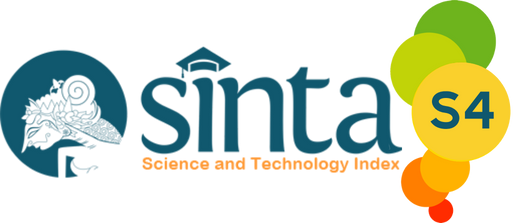Kemampuan Kanji JLPT N4 Pada Mahasiswa Tahun Masuk 2021 Prodi Pendidikan Bahasa Jepang Universitas Negeri Padang
Kata Kunci:
Ability, JLPT N4 Kanji, On Kei GiAbstrak
This research is motivated by the difficulty of students in learning kanji that have two ways of reading kanji, similar kanji forms and have more than one streak. The purpose of this study was to determine the ability of JLPT N4 kanji in 2021 entry year students of the Japanese language education program at Padang State University. This research uses descriptive quantitative method. The population in this study were 2021 entry year students of Japanese language education study program at Padang State University, totaling 57 students. The sample of this study amounted to 25 students using random sampling technique. The data in this study are the results of the JLPT N4 kanji ability test with the element on kei gi. Based on the results of the study, it is known that the ability of JLPT N4 kanji is in the “Good” classification with an average of 71.87. The on element of indicator I is in the “With Praise” classification with an average of 88.4. The kei element of indicator II is in the “Excellent” classification with an average of 76. The gi element of indicator III is in the “Less than Adequate” classification with an average of 51.2.Referensi
Alfionita,Y., & Yulia, N. (2021). Analisis Kesalahan Fonologi Yomikata Kanji
Mahasiswa Program Studi Pendidikan Bahasa Jepang Universitas
Negeri Padang. Omiyage: Jurnal Bahasa dan Pembelajaran Bahasa
Jepang, 4(1), 1-7
Chusna, F. (2014). Analisis Kesalahan Mahasiswa dalam Menulis dan Membaca Kanji. Skripsi. Bandung: Universitas Komputer Indonesia
JLPT. (2012). Japanese Language Proficiency Test [Online] Tersedia pada
(https://www.jlpt.jp/e/ ) diakses 22 Juni 2023
Priyono. (2008). Metode Penelitian Kuantitatif. Surabaya: Zifatama Publishing
Renariah. (2002). Bahasa Jepang dan Karakteristiknya. Jurnal Sastra Jepang Fakultas Sastra Universitas Kristen Marantha 1(2)
Renariah. (2004). Mengingat Kanji melalui Bushu. Jurnal Fokus Jurusan
Pendidikan Bahasa Asing FPBS UPI 1(2)
Sihombing, dkk. (2022). Identifikasi Tingkat Kesulitan Kanji pada Mahasiswa Program Studi Sastra Jepang Wilayah Sumatera Utara dan Sumatera Barat. LWSA Conference Series 5 (2)
Srikandi, L. (2012). Media Interaktif OBOEYASUI KANJI 4 sebagai Media
Pembelajaran Kanji N4. Skripsi. Bandung: Universitas Komputer
Indonesia
Sudjianto, Dahidi. A. (2007). Pengantar Linguistik Bahasa Jepang. Jakarta: Kesaint Blanc
Sutedi, D. (2011). Dasar-dasar Linguistik Bahasa Jepang. Bandung: Humaniora
Sutedi, D. (2018). Penelitian Pendidikan Bahasa Jepang. Bandung: Humaniora








